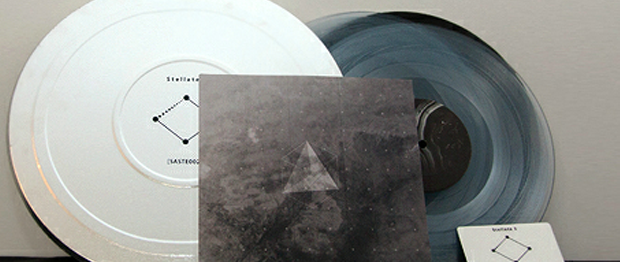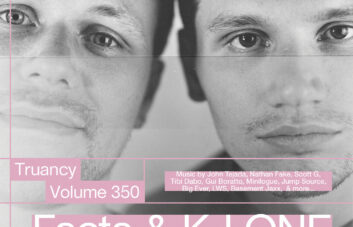Supporters who spend their money on music often find themselves explaining to others why they buy music. We know very well that we can spend our whole lives listening to a lot of good music without ever having to pay for any of it. We sometimes do have to ask ourselves why we really buy music though, especially if we’re talking about electronic music. Most people who buy electronic music often DJ, yet if we don’t DJ, do we buy music because we want to support those who make music in general? Or if we do DJ, do we buy music because we feel obligated to support the artists that we play out? Thinking about why we buy music can help us frame how we think about the new chapter of the Stroboscopic Artefacts’s four-part compilation, “Stellate”, which allows us to think about what purpose buying electronic music serves the artistic community in general.
Stroboscopic Artefacts writes that the “Stellate” series consists of “sounds gathered from the experimental frontiers and outer edges of electronic music.” If you’re familiar with the label’s usual output, then you could potentially apply that description to any of their previous releases. However, don’t expect “Stellate” to have new techno tracks from Perc, Lucy, Xhin, Dadub or any other member of the Stroboscopic Artefacts community. Only the final two tracks from Plaster resemble anything close to what you might hear on out. Each of the artists on this section of the compilation, namely Dadub, Silent Servant & Luis Farfan, Roll the Dice and Plaster, spend their time developing a sense of what the experimental frontiers of electronic music sound like. They all succeed in this. All of the music that’s displayed here shows that the artists spent time experimenting with potential sounds and arrangements, producing an enjoyable collection of music.
Though “Stellate 2” does not disappoint in providing successful experimental and ambient music, the question still remains regarding the nature of buying electronic music in general. Each release of the four-part “Stellate” collection comes boxed in a limited round metallic tin, with the music pressed on two transparent blue 10” records, with each section costing fifty euros. For a lot of consumers, that’s a lot of money for eight tracks. Of course, Stroboscopic Artefacts also sells downloads of each of these sections at the normal price.
So who buys this? In general, vinyl sales have increased recently, with the US alone seeing vinyl sales increasing last year by roughly thirty-nine percent. The fact that DJs and fans of electronic music buy a lot of records is also no secret. For many people, buying vinyl is a way to support the artist and the industry. Blawan, for example, suggests that buying vinyl serves the economy and those working in the industry better than buying music digitally. Others buy music because, if they DJ, then playing records serves to provide a sense of acceptance in the community. Theo Parrish has defended vinyl DJs for many years, asserting that a DJ that plays records will out-perform any DJ who plays digitally. Do we run the risk, though, of commoditizing music when we suggest any of these arguments? “Stellate 2” provides a way for us to look at buying music in a different light. If you buy this, then you’re most likely not going to play this out at a nightclub for at least two reasons. First, this music does not work in a club setting and second, if you’re a vinyl DJ, you may not want to play your rare blue transparent 10” record out that cost you as much by itself as five to seven of your other records combined. By buying “Stellate 2,” which we recommend buying in the format that you can afford – whether vinyl or digital, you assert in your actions that you don’t buy music simply to play at a club, but that you buy music because you enjoy music.
Stream: Stroboscopic Artefacts – Stellate 2
The second installment of the Stellate Series is out now on Stroboscopic Artefacts.




